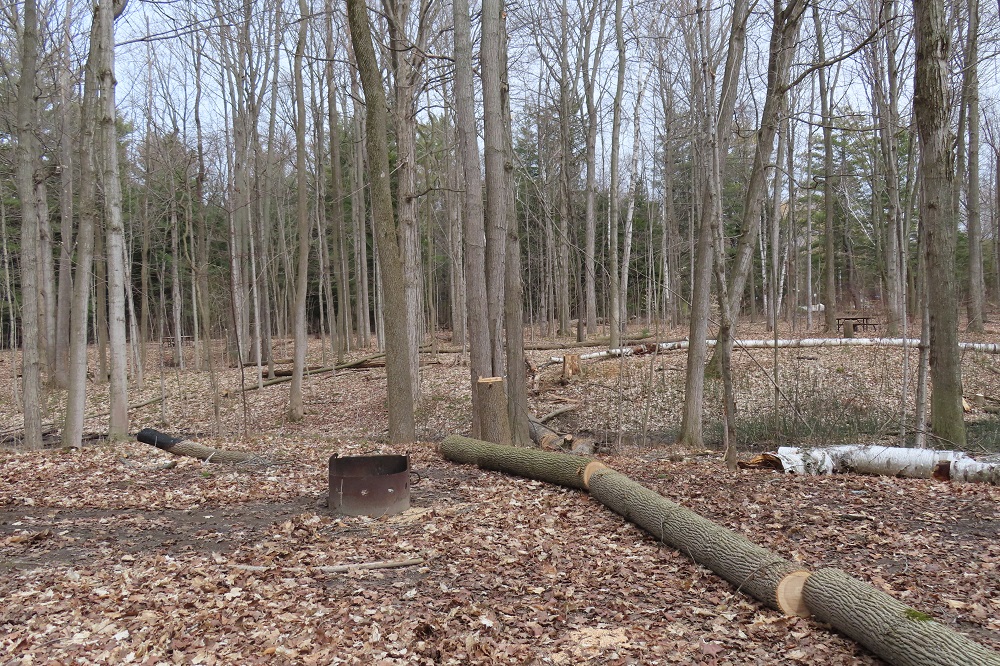Today’s post comes from Laura McClintock, senior park naturalist at Sibbald Point Provincial Park.
The Ontario Parks system is made up of complex ecosystems supporting hundreds of plants, animals, and insects.
But not all the species found in parks belong.
Invasive species – non-native organisms that are introduced to an environment and negatively impact it – are taking a toll that can be felt by wildlife and visitors alike.
In this blog, we will look at the stresses of invasive species, specifically Emerald Ash Borer, on our park ecosystems and how these impacts are being felt at Sibbald Point.
~
Emerald Ash Borer at Sibbald Point
Emerald Ash Borer (EAB) is a small beetle native to Asia.
It was accidentally introduced to North America in the 1990s and first observed in Ontario in the early 2000s.
This beetle has spread steadily through the province through lumber production and the movement of firewood.

The beetles lay their eggs on the ash tree bark and the larvae bore into the trees to feed. The feeding cuts off the tree’s nutrient supplies, killing the tree.
The larvae pupate over winter inside the tree, and the adult beetle emerges in the spring, leaving a distinct “D”-shaped exit hole.

Sibbald Point is a well-loved and heavily used park, visited by thousands yearly.
While no single event introduced Emerald Ash Borer into the park, the beetle’s ability to fly several kilometres and the movement of outside firewood into the park were likely the main routes of introduction.

Due to this invasive beetle, Sibbald Point has experienced a widespread die-off of ash trees, and as a result, significant tree removal of hazardous trees has taken place.
~
A not-so-pretty picture
The large-scale removal of trees is shocking; there’s no doubt about it.
Decisions such as these are made with the safety of visitors and the overall health of the park at the forefront.

The shade and privacy of our campgrounds have been significantly reduced due to tree removal. We ask visitors to please be patient and adjust expectations as we work through these changes together.
If you have any questions or concerns, please don’t hesitate to reach out to park staff.
~
A marathon, not a sprint
Removing hazardous ash trees is only one step on the long journey of forest restoration.
Currently, park staff are working to remove other invasive species from the campgrounds to minimize their spread, as the additional sunlight and disturbed soil from the tree removal can encourage the growth of invasive plant species.

Forest restoration is a multi-year undertaking that may at times look unsightly or slow, but with patience and dedication, it can improve forest health and diversity.
~
In sickness and in health
You too have a role in managing invasive species in Ontario Parks.
As park lovers, we need your help in our mission to stop invasive species from spreading.
Please refrain from:
- bringing outside firewood into provincial parks
- walking off trails
- allowing dogs off-leash
All these actions increase the spread of invasive species.
Invasive species infestations are just one of the many stresses our protected areas withstand. And we thank you, our visitors, for being the park lovers that you are and for continuing to support us through challenging times.


